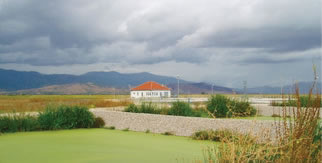
Environmental Science and Engineering
Improving the Efficacy of Wastewater Polishing Reed Beds
Publication Date: August 2010
Cooperating Institution: John Hopkins University
Principal Investigator Cynthia McOliver
Project Budget: $25,000
Project Identifier: DEC11U06
DESCRIPTION
This student-led research project analyzed species of microbiological contaminants entering, residing, and leaving constructed horizontal wetlands used for tertiary treatment of municipal wastewater, to determine removal efficacy of Cryptosporidium oocysts, G. duodenalis cysts, and human-virulent microsporidian spore species by wetlands from secondary-treated wastewater. Using samples from four constructed horizontal wetlands, the project demonstrated that: a) composition of human pathogen species in secondary treated wastewater entering constructed wetlands and in tertiary treated wastewater is highly complex and dynamic; b) small-scale constructed wetlands may not provide sufficient remediation for human zoonotic protozoan pathogens; and c) most of the pathogens discharged by wetlands to surface waters were viable, thus potentially capable of causing human infections.
Associated Documents:

